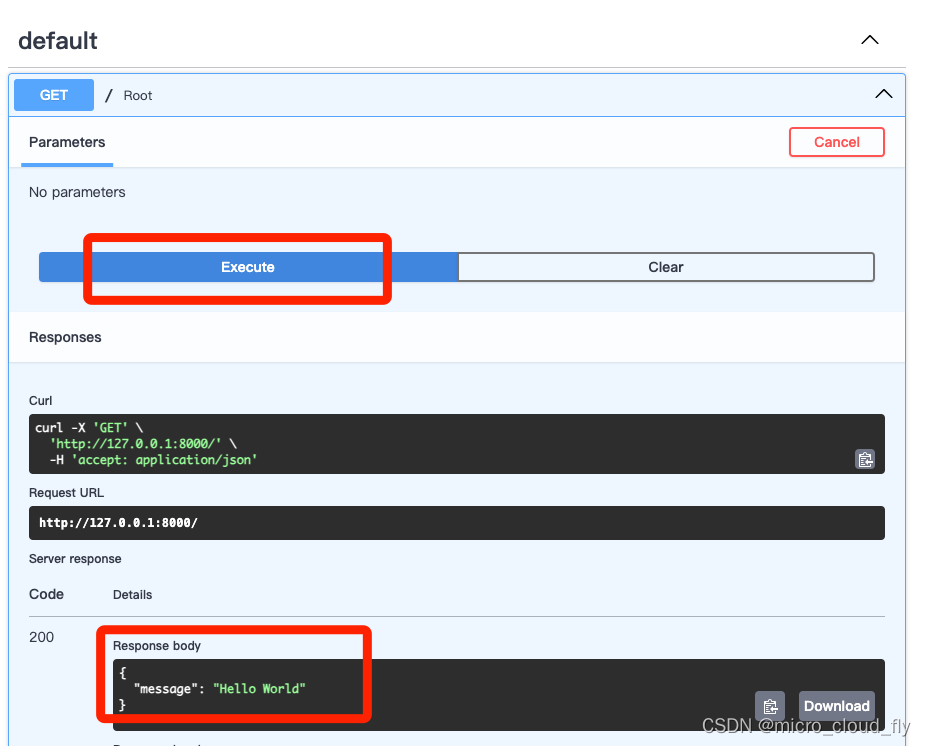Pytest是Python的一种易用、高效和灵活的单元测试框架,可以支持单元测试和功能测试。本文不以介绍Pytest工具本身为目的,而是以一个实际的API测试项目为例,将Pytest的功能应用到实际的测试工程实践中,教大家将Pytest用起来。
在开始本文之前,我想跟大家澄清两个概念,一个是测试框架一个是测试工具。很多人容易把他们搞混了,测试框架是诸如Unittest、Pytest、TestNG这类,而测试工具指的则是Selenium、Appium、Jmeter这类。
测试框架的作用是,帮助我们管理测试用例、执行测试用例、参数化、断言、生成测试报告等基础性工作,让我们将精力用在测试用例的编写上。好的测试框架应该具有很高的扩展性,支持二次开发,并能够支持多种类型的自动化测试。
测试工具的作用是为了完成某一类型的测试,比如Selenium用于对WEB UI进行自动化测试,Appium用来对APP进行自动化测试,Jmeter可以用来进行API自动化测试和性能测试。另外,Java语言中OkHttp库,Python语言中的requests库,这些HTTP的client也可以看做是一种API测试工具。
澄清了这两个概念,说一下本文的目的。其实网上已经有很多教程,包括官方文档,都是以介绍Pytest的功能为出发点,罗列了各种功能的使用方法,大家看完之后会感觉都明白了,但是还是不知道如何与实际项目相结合,真正落地用起来。本文不以介绍Pytest工具本身为目的,而是以一个实际的API测试项目为例,通过单元测试框架Pytest和Python的Requests库相结合,将Pytest功能应用到实际的测试工程实践中,教大家将Pytest用起来。
请相信我,使用Pytest会让你的测试工作非常高效。
01 — Pytest核心功能
在开始使用Pytest之前,先来了解一下Pytest的核心功能,根据官方网站介绍,它具有如下功能和特点:
- 非常容易上手,入门简单,文档丰富,文档中有很多实例可以参考。
- 能够支持简单的单元测试和复杂的功能测试。
- 支持参数化。
- 能够执行全部测试用例,也可以挑选部分测试用例执行,并能重复执行失败的用例。
- 支持并发执行,还能运行由nose, unittest编写的测试用例。
- 方便、简单的断言方式。
- 能够生成标准的Junit XML格式的测试结果。
- 具有很多第三方插件,并且可以自定义扩展。
- 方便的和持续集成工具集成。
Pytest的安装方法与安装其他的python软件无异,直接使用pip安装即可。
| 1 | $ pip install -U pytest
|
安装完成后,可以通过下面方式验证是否安装成功:
如果能够输出帮助信息,则表示安装成功了。
接下来,通过开发一个API自动化测试项目,详细介绍以上这些功能是如何使用的。
02 — 创建测试项目
先创建一个测试项目目录api_pytest,为这个项目创建虚拟环境。关于虚拟环境的创建,可以参考这篇文章《利用pyenv和pipenv管理多个相互独立的Python虚拟开发环境》。这里我们直接介绍如何使用,执行下面两条命令:
| 1 2 | $ mkdir api_pytest
$ pipenv --python 3.7.7
|
这样,项目目录和虚拟环境就创建完成了。
接着,安装依赖包,第一个是要安装pytest,另外本文是以API自动化测试为例,因此还要安装一下HTTP 的client包requests。
| 1 | $ pipenv install pytest requests
|
现在我们创建一个data目录,用来存放测试数据,一个tests目录,用来存放测试脚本,一个config目录,用来存放配置文件,一个utils目录从来存放工具。
| 1 2 3 4 | $ mkdir data
$ mkdir tests
$ mkdir config
$ mkdir utils
|
现在,项目的目录结构应该是如下这样:
| 1 2 3 4 5 6 7 8 9 10 | $ tree
.
├── Pipfile
├── Pipfile.lock
├── config
├── data
├── tests
└── utils
4 directories, 2 files
|
至此测试项目就创建完成了。接着编写测试用例。
03 — 编写测试用例
在这部分,我们以测试豆瓣电影列表API和电影详情API为例,编写测试用例。
这两个API信息如下:
| 接口 | 示例 |
|---|
| 电影列表 | http://api.douban.com/v2/movie/in_theaters?apikey=0df993c66c0c636e29ecbb5344252a4a&start=0&count=10 |
| 电影详情 | https://api.douban.com/v2/movie/subject/30261964?apikey=0df993c66c0c636e29ecbb5344252a4a |
我们先写电影列表API的自动化测试用例,设置3个校验点:
- 验证请求中的start与响应中的start一致。
- 验证请求中的count与响应中的count一致。
- 验证响应中的title是"正在上映的电影-上海"。
在tests目录里面,创建个test_in_theaters.py文件,里面编写测试用例,内容如下:
| 1 2 3 4 5 6 7 8 9 10 11 12 13 14 15 16 17 18 | import requests
class TestInTheaters(object):
def test_in_theaters(self):
host = "http://api.douban.com"
path = "/v2/movie/in_theaters"
params = {"apikey": "0df993c66c0c636e29ecbb5344252a4a",
"start": 0,
"count": 10
}
headers = {
"User-Agent": "Mozilla/5.0 (Macintosh; Intel Mac OS X 10_14_5) AppleWebKit/537.36 (KHTML, like Gecko) Chrome/80.0.3987.149 Safari/537.36"
}
r = requests.request("GET", url=host + path, headers=headers, params=params)
response = r.json()
assert response["count"] == params["count"]
assert response["start"] == params["start"]
assert response["title"] == "正在上映的电影-上海", "实际的标题是:{}".format(response["title"])
|
你可能会问,这就是测试用例了?这就是基于Pytest的测试用例了吗?答案是肯定的。基于Pytest编写自动化测试用例,与编写平常的Python代码没有任何区别,唯一的区别在于文件名、函数名或者方法名要以test_开头或者_test结尾,类名以Test开头。
Pytest会在test_*.py 或者 *_test.py 文件中,寻找class外边的test_开头的函数,或者Test开头的class里面的test_开头的方法,将这些函数和方法作为测试用例来管理。可以通过下面的命令,查看Pytest收集到哪些测试用例:
| 1 2 3 4 5 6 7 8 9 10 | $ py.test --collect-only
====================================================== test session starts =======================================================
platform darwin -- Python 3.7.7, pytest-5.4.1, py-1.8.1, pluggy-0.13.1
rootdir: /Users/chunming.liu/learn/api_pytest
collected 1 item
<Module tests/test_in_theaters.py>
<Class TestInTheaters>
<Function test_in_theaters>
===================================================== no tests ran in 0.10s ======================================================
|
从结果中看到,一共有一条测试用例,测试用例位于tests/test_in_theaters.py这个module里面TestInTheaters这个类中的test_in_theaters这个方法。
在Pytest中断言使用的是Python自带的assert语句,非常简单。
04 — 执行测试用例
下面来运行这个测试:
| 1 2 3 4 5 6 7 8 9 10 11 12 13 14 15 16 17 18 19 20 21 22 23 24 25 26 27 28 29 30 31 32 33 34 35 36 37 38 39 40 41 42 43 44 45 46 47 48 49 50 | $ py.test tests/
====================================================== test session starts =======================================================
platform darwin -- Python 3.7.7, pytest-5.4.1, py-1.8.1, pluggy-0.13.1
rootdir: /Users/chunming.liu/learn/api_pytest
collected 1 item
tests/test_in_theaters.py . [100%]
======================================================= 1 passed in 0.61s ========================================================
(api_pytest) MBC02X21W4G8WN:api_pytest chunming.liu$ py.test tests/
====================================================== test session starts =======================================================
platform darwin -- Python 3.7.7, pytest-5.4.1, py-1.8.1, pluggy-0.13.1
rootdir: /Users/chunming.liu/learn/api_pytest
collected 1 item
tests/test_in_theaters.py F [100%]
============================================================ FAILURES ============================================================
________________________________________________ TestInTheaters.test_in_theaters _________________________________________________
self = <test_in_theaters.TestInTheaters object at 0x110eee9d0>
def test_in_theaters(self):
host = "http://api.douban.com"
path = "/v2/movie/in_theaters"
params = {"apikey": "0df993c66c0c636e29ecbb5344252a4a",
"start": 0,
"count": 10
}
headers = {
"User-Agent": "Mozilla/5.0 (Macintosh; Intel Mac OS X 10_14_5) AppleWebKit/537.36 (KHTML, like Gecko) Chrome/80.0.3987.149 Safari/537.36"
}
r = requests.request("GET", url=host + path, headers=headers, params=params)
response = r.json()
assert response["count"] == params["count"]
assert response["start"] == params["start"]
assert response["total"] == len(response["subjects"])
> assert response["title"] == "正在上映的电影-上海", "实际的标题是:{}".format(response["title"])
E AssertionError: 实际的标题是:正在上映的电影-北京
E assert '正在上映的电影-北京' == '正在上映的电影-上海'
E - 正在上映的电影-上海
E ? ^^
E + 正在上映的电影-北京
E ? ^^
tests/test_in_theaters.py:20: AssertionError
==================================================== short test summary info =====================================================
FAILED tests/test_in_theaters.py::TestInTheaters::test_in_theaters - AssertionError: 实际的标题是正在上映的电影-北京
======================================================= 1 failed in 0.96s ========================================================
|
这个命令执行时,会在tests/目录里面寻找测试用例。执行测试的时候,如果不指定测试用例所在目录,Pytest会在当前的目录下,按照前面介绍的规则寻找测试用例并执行。
通过上面的测试输出,我们可以看到该测试过程中,一共收集到了一个测试用例,测试结果是失败的(标记为F),并且在FAILURES部分输出了详细的错误信息,通过这些信息,我们可以分析测试失败的原因。上面测试用例的失败原因是在断言title的时候出错了,预期的title是“正在上映的电影-上海”,但是实际是“正在上映的电影-北京”,预期和实际的对比非常直观。
执行测试用例的方法还有很多种,都是在py.test后面添加不同的参数即可,我在下面罗列了一下:
| 1 2 3 4 5 6 7 8 9 10 | $ py.test # run all tests below current dir
$ py.test test_module.py # run tests in module
$ py.test somepath # run all tests below somepath
$ py.test -k stringexpr # only run tests with names that match the
# the "string expression", e.g. "MyClass and not method"
# will select TestMyClass.test_something
# but not TestMyClass.test_method_simple
$ py.test test_module.py::test_func # only run tests that match the "node ID",
# e.g "test_mod.py::test_func" will select
# only test_func in test_mod.py
|
上面这些用法,通过注释很容易理解。在测试执行过程中,这些方法都有机会被用到,最好掌握一下。
05 — 数据与脚本分离
03小节的测试用例,将测试数据和测试代码放到了同一个py文件中,而且是同一个测试方法中,产生了紧耦合,会导致修改测试数据或测试代码时,可能会相互影响,不利于测试数据和测试脚本的维护。比如,为测试用例添加几组新的测试数据,除了准备测试数据外,还要修改测试代码,降低了测试代码的可维护性。
另外接口测试往往是数据驱动的测试,测试数据和测试代码放到一起也不方便借助Pytest做参数化。
将测试代码和测试数据分离已经是测试领域中的共识了。在data/目录下创建一个用于存放测试数据的Yaml文件test_in_theaters.yaml,内容如下:
| 1 2 3 4 5 6 7 8 9 10 11 12 13 14 15 16 17 | ---
tests:
- case: 验证响应中start和count与请求中的参数一致
http:
method: GET
path: /v2/movie/in_theaters
headers:
User-Agent: Mozilla/5.0 (Macintosh; Intel Mac OS X 10_14_5) AppleWebKit/537.36 (KHTML, like Gecko) Chrome/80.0.3987.149 Safari/537.36
params:
apikey: 0df993c66c0c636e29ecbb5344252a4a
start: 0
count: 10
expected:
response:
title: 正在上映的电影-上海
count: 10
start: 0
|
熟悉Yaml格式的同学,应该很容易看懂上面测试数据文件的内容。这个测试数据文件中,有一个数组tests,里面包含的是一条完整的测试数据。一个完整的测试数据由三部分组成:
- case,表示测试用例名称。
- http,表示请求对象。
- expected,表示预期结果。
http这个请求对象包含了被测接口的所有参数,包括请求方法、请求路径、请求头、请求参数。
expected表示预期结果,上面的测试数据中,只列出了对请求响应的预期值,实际测试中,还可以列出对数据库的预期值。
测试脚本也要做相应的改造,需要读取test_in_theaters.yaml文件获取请求数据和预期结果,然后通过requests发出请求。修改后的测试代码如下:
| 1 2 3 4 5 6 7 8 9 10 11 12 13 14 15 16 17 18 19 20 21 22 23 24 25 26 27 28 29 30 31 32 33 34 | import requests
import yaml
def get_test_data(test_data_path):
case = [] # 存储测试用例名称
http = [] # 存储请求对象
expected = [] # 存储预期结果
with open(test_data_path) as f:
dat = yaml.load(f.read(), Loader=yaml.SafeLoader)
test = dat['tests']
for td in test:
case.append(td.get('case', ''))
http.append(td.get('http', {}))
expected.append(td.get('expected', {}))
parameters = zip(case, http, expected)
return case, parameters
cases, parameters = get_test_data("/Users/chunming.liu/learn/api_pytest/data/test_in_theaters.yaml")
list_params=list(parameters)
class TestInTheaters(object):
def test_in_theaters(self):
host = "http://api.douban.com"
r = requests.request(list_params[0][1]["method"],
url=host + list_params[0][1]["path"],
headers=list_params[0][1]["headers"],
params=list_params[0][1]["params"])
response = r.json()
assert response["count"] == list_params[0][2]['response']["count"]
assert response["start"] == list_params[0][2]['response']["start"]
assert response["total"] == len(response["subjects"])
assert response["title"] == list_params[0][2]['response']["title"], "实际的标题是:{}".format(response["title"])
|
注意,读取Yaml文件,需要安装PyYAML包。
测试脚本中定义了一个读取测试数据的函数get_test_data,通过这个函数从测试数据文件test_in_theaters.yaml中读取到了测试用例名称case,请求对象http和预期结果expected。这三部分分别是一个列表,通过zip将他们压缩到一起。
测试方法test_in_theaters并没有太大变化,只是发送请求所使用的测试数据不是写死的,而是来自于测试数据文件了。
通常情况下,读取测试数据的函数不会定义在测试用例文件中,而是会放到utils包中,比如放到utils/commonlib.py中。至此,整个项目的目录结构应该是如下所示:
| 1 2 3 4 5 6 7 8 9 10 11 | $ tree
.
├── Pipfile
├── Pipfile.lock
├── config
├── data
│ └── test_in_theaters.yaml
├── tests
│ └── test_in_theaters.py
└── utils
└── commlib.py
|
这样,我们修改测试脚本,就修改test_in_theaters.py,变更测试数据,就修改test_in_theaters.yaml。但是目前看,感觉好像并没有真正看到测试数据和脚本分离的厉害之处,或者更加有价值的地方,那么我们接着往下看。
06 — 参数化
上面我们将测试数据和测试脚本相分离,如果要为测试用例添加更多的测试数据,往tests数组中添加更多的同样格式的测试数据即可。这个过程叫作参数化。
参数化的意思是对同一个接口,使用多种不同的输入对其进行测试,以验证是否每一组输入参数都能得到预期结果。Pytest提供了pytest.mark.paramtrize这种方式来进行参数化,我们先看下官方网站提供的介绍pytest.mark.paramtrize用法的例子:
| 1 2 3 4 5 6 7 8 9 10 11 12 13 14 15 | # content of tests/test_time.py
import pytest
from datetime import datetime, timedelta
testdata = [
(datetime(2001, 12, 12), datetime(2001, 12, 11), timedelta(1)),
(datetime(2001, 12, 11), datetime(2001, 12, 12), timedelta(-1)),
]
@pytest.mark.parametrize("a,b,expected", testdata)
def test_timedistance_v0(a, b, expected):
diff = a - b
assert diff == expected
|
执行上面的脚本将会得到下面的输出,测试方法test_timedistance_v0被执行了两遍,第一遍执行用的测试数据是testdata列表中的第一个元组,第二遍执行时用的测试数据是testdata列表中的第二个元组。这就是参数化的效果,同一个脚本可以使用不同的输入参数执行测试。
| 1 2 3 4 5 6 7 8 9 10 | ============================= test session starts ==============================
platform darwin -- Python 3.7.7, pytest-5.4.1, py-1.8.1, pluggy-0.13.1 -- /Users/chunming.liu/.local/share/virtualenvs/api_pytest-wCozfXSU/bin/python
cachedir: .pytest_cache
rootdir: /Users/chunming.liu/learn/api_pytest/tests
collecting ... collected 2 items
test_time.py::test_timedistance_v0[a0-b0-expected0] PASSED [ 50%]
test_time.py::test_timedistance_v0[a1-b1-expected1] PASSED [100%]
============================== 2 passed in 0.02s ===============================
|
照猫画虎,对我们自己的测试项目中的测试脚本进行如下修改。
| 1 2 3 4 5 6 7 8 9 10 11 12 13 14 15 16 17 18 19 20 | import pytest
import requests
from utils.commlib import get_test_data
cases, list_params = get_test_data("/Users/chunming.liu/learn/api_pytest/data/test_in_theaters.yaml")
class TestInTheaters(object):
@pytest.mark.parametrize("case,http,expected", list(list_params), ids=cases)
def test_in_theaters(self, case, http, expected):
host = "http://api.douban.com"
r = requests.request(http["method"],
url=host + http["path"],
headers=http["headers"],
params=http["params"])
response = r.json()
assert response["count"] == expected['response']["count"]
assert response["start"] == expected['response']["start"]
assert response["title"] == expected['response']["title"], "实际的标题是:{}".format(response["title"])
|
在测试方法上面添加了一个装饰器@pytest.mark.parametrize,装饰器会自动对list(list_params)解包并赋值给装饰器的第一参数。装饰器的第一个参数中逗号分隔的变量可以作为测试方法的参数,在测试方法内就可以直接获取这些变量的值,利用这些值发起请求和进行断言。装饰器还有一个参数叫ids,这个值作为测试用例的名称将打印到测试结果中。
在执行修改后的测试脚本前,我们在测试数据文件再增加一组测试数据,现在测试数据文件中,包含了两组测试数据:
| 1 2 3 4 5 6 7 8 9 10 11 12 13 14 15 16 17 18 19 20 21 22 23 24 25 26 27 28 29 30 31 32 | ---
tests:
- case: 验证响应中start和count与请求中的参数一致
http:
method: GET
path: /v2/movie/in_theaters
headers:
User-Agent: Mozilla/5.0 (Macintosh; Intel Mac OS X 10_14_5) AppleWebKit/537.36 (KHTML, like Gecko) Chrome/80.0.3987.149 Safari/537.36
params:
apikey: 0df993c66c0c636e29ecbb5344252a4a
start: 0
count: 10
expected:
response:
title: 正在上映的电影-上海
count: 10
start: 0
- case: 验证响应中title是"正在上映的电影-北京"
http:
method: GET
path: /v2/movie/in_theaters
headers:
User-Agent: Mozilla/5.0 (Macintosh; Intel Mac OS X 10_14_5) AppleWebKit/537.36 (KHTML, like Gecko) Chrome/80.0.3987.149 Safari/537.36
params:
apikey: 0df993c66c0c636e29ecbb5344252a4a
start: 1
count: 5
expected:
response:
title: 正在上映的电影-北京
count: 5
start: 1
|
现在我们执行一下测试脚本,看看效果:
| 1 2 3 4 5 6 7 8 9 10 11 12 13 14 15 16 17 18 19 20 21 22 23 24 25 26 27 28 29 30 31 32 33 34 35 36 37 38 39 40 | $ export PYTHONPATH=/Users/chunming.liu/learn/api_pytest
$ py.test tests/test_in_theaters.py
====================================================== test session starts =======================================================
platform darwin -- Python 3.7.7, pytest-5.4.1, py-1.8.1, pluggy-0.13.1
rootdir: /Users/chunming.liu/learn/api_pytest, inifile: pytest.ini
collected 2 items
tests/test_in_theaters.py F. [100%]
============================================================ FAILURES ============================================================
___________________________________ TestInTheaters.test_in_theaters[验证响应中start和count与请求中的参数一致] ___________________________________
self = <test_in_theaters.TestInTheaters object at 0x102659510>, case = '验证响应中start和count与请求中的参数一致'
http = {'headers': {'User-Agent': 'Mozilla/5.0 (Macintosh; Intel Mac OS X 10_14_5) AppleWebKit/537.36 (KHTML, like Gecko) Chr...T', 'params': {'apikey': '0df993c66c0c636e29ecbb5344252a4a', 'count': 10, 'start': 0}, 'path': '/v2/movie/in_theaters'}
expected = {'response': {'count': 10, 'start': 0, 'title': '正在上映的电影-上海'}}
@pytest.mark.parametrize("case,http,expected", list(list_params), ids=cases)
def test_in_theaters(self, case, http, expected):
host = "http://api.douban.com"
r = requests.request(http["method"],
url=host + http["path"],
headers=http["headers"],
params=http["params"])
response = r.json()
assert response["count"] == expected['response']["count"]
assert response["start"] == expected['response']["start"]
> assert response["title"] == expected['response']["title"], "实际的标题是:{}".format(response["title"])
E AssertionError: 实际的标题是:正在上映的电影-北京
E assert '正在上映的电影-北京' == '正在上映的电影-上海'
E - 正在上映的电影-上海
E ? ^^
E + 正在上映的电影-北京
E ? ^^
tests/test_in_theaters.py:20: AssertionError
==================================================== short test summary info =====================================================
FAILED tests/test_in_theaters.py::TestInTheaters::test_in_theaters[\u9a8c\u8bc1\u54cd\u5e94\u4e2dstart\u548ccount\u4e0e\u8bf7\u6c42\u4e2d\u7684\u53c2\u6570\u4e00\u81f4]
================================================== 1 failed, 1 passed in 0.69s ===================================================
|
从结果看,Pytest收集到了2个items,测试脚本执行了两遍,第一遍执行用第一组测试数据,结果是失败(F),第二遍执行用第二组测试数据,结果是通过(.)。执行完成后的summary info部分,看到了一些Unicode编码,这里其实是ids的内容,因为是中文,所以默认这里显示Unicode编码。为了显示中文,需要在测试项目的根目录下创建一个Pytest的配置文件pytest.ini,在其中添加如下代码:
| 1 2 | [pytest]
disable_test_id_escaping_and_forfeit_all_rights_to_community_support = True
|
再次执行测试脚本,在测试结果的summary_info部分,则会显示正确中文内容了。
FAILED tests/test_in_theaters.py::TestInTheaters::test_in_theaters[验证响应中start和count与请求中的参数一致] - AssertionError: ...
按照这种参数化的方法,如果想修改或者添加测试数据,只需要修改测试数据文件即可。
现在,自动化测试项目的目录结构应该是如下这样:
| 1 2 3 4 5 6 7 8 9 10 11 12 13 14 15 | $ tree
.
├── Pipfile
├── Pipfile.lock
├── config
├── data
│ └── test_in_theaters.yaml
├── pytest.ini
├── tests
│ ├── test_in_theaters.py
│ └── test_time.py
└── utils
└── commlib.py
4 directories, 7 files
|
07 — 测试配置管理
06小节的自动化测试代码中,host是写在测试脚本中的,这种硬编码方式显然是不合适的。这个host在不同的测试脚本都会用到,应该放到一个公共的地方来维护。如果需要对其进行修改,那么只需要修改一个地方就可以了。根据我的实践经验,将其放到config文件夹中,是比较好的。
除了host外,其他与测试环境相关的配置信息也可以放到config文件夹中,比如数据库信息、kafka连接信息等,以及与测试环境相关的基础测试数据,比如测试账号。很多时候,我们会有不同的测试环境,比如dev环境、test环境、stg环境、prod环境等。我们可以在config文件夹下面创建子目录来区分不同的测试环境。因此config文件夹,应该是类似这样的结构:
| 1 2 3 4 5 | ├── config
│ ├── prod
│ │ └── config.yaml
│ └── test
│ └── config.yaml
|
在config.yaml中存放不同环境的配置信息,以前面的例子为例,应该是这样:
| 1 2 | host:
douban: http://api.douban.com
|
将测试配置信息从脚本中拆分出来,就需要有一种机制将其读取到,才能在测试脚本中使用。Pytest提供了fixture机制,通过它可以在测试执行前执行一些操作,在这里我们利用fixture提前读取到配置信息。我们先对官方文档上的例子稍加修改,来介绍fixture的使用。请看下面的代码:
| 1 2 3 4 5 6 7 8 9 10 11 12 13 14 15 16 | import pytest
@pytest.fixture
def smtp_connection():
import smtplib
connection = smtplib.SMTP_SSL("smtp.163.com", 465, timeout=5)
yield connection
print("teardown smtp")
connection.close()
def test_ehlo(smtp_connection):
response, msg = smtp_connection.ehlo()
assert response == 250
assert 0
|
这段代码中,smtp_connection被装饰器@pytest.fixture装饰,表明它是一个fixture函数。这个函数的功能是连接163邮箱服务器,返回一个连接对象。当test_ehlo的最后一次测试执行完成后,执行print(“teardown smtp”)和connection.close()断开smtp连接。
fixture函数名可以作为测试方法test_ehlo的参数,在测试方法内部,使用fixture函数名这个变量,就相当于是在使用fixture函数的返回值。
回到我们读取测试配置信息的需求上,在自动化测试项目tests/目录中创建一个文件conftest.py,定义一个fixture函数env:
| 1 2 3 4 5 6 7 8 9 | @pytest.fixture(scope="session")
def env(request):
config_path = os.path.join(request.config.rootdir,
"config",
"test",
"config.yaml")
with open(config_path) as f:
env_config = yaml.load(f.read(), Loader=yaml.SafeLoader)
return env_config
|
conftest.py文件是一个plugin文件,里面可以实现Pytest提供的Hook函数或者自定义的fixture函数,这些函数只在conftest.py所在目录及其子目录中生效。scope="session"表示这个fixture函数的作用域是session级别的,在整个测试活动中开始前执行,并且只会被执行一次。除了session级别的fixture函数,还有function级别、class级别等。
env函数中有一个参数request,其实request也是一个fixture函数。在这里用到了它的request.config.rootdir属性,这个属性表示的是pytest.ini这个配置文件所在的目录,因为我们的测试项目中pytest.ini处于项目的根目录,所以config_path的完整路径就是:
/Users/chunming.liu/learn/api_pytest/config/test/config.yaml
将env作为参数传入测试方法test_in_theaters,将测试方法内的host改为env[“host”][“douban”]:
| 1 2 3 4 5 6 7 8 | class TestInTheaters(object):
@pytest.mark.parametrize("case,http,expected", list(list_params), ids=cases)
def test_in_theaters(self, env, case, http, expected):
r = requests.request(http["method"],
url=env["host"]["douban"] + http["path"],
headers=http["headers"],
params=http["params"])
response = r.json()
|
这样就达到了测试配置文件与测试脚本相互分离的效果,如果需要修改host,只需要修改配置文件即可,测试脚本文件就不用修改了。修改完成后执行测试的方法不变。
上面的env函数实现中,有点点小缺憾,就是读取的配置文件是固定的,读取的都是test环境的配置信息,我们希望在执行测试时,通过命令行选项,可指定读取哪个环境的配置,以便在不同的测试环境下开展测试。Pytest提供了一个叫作pytest_addoption的Hook函数,可以接受命令行选项的参数,写法如下:
| 1 2 3 4 5 6 | def pytest_addoption(parser):
parser.addoption("--env",
action="store",
dest="environment",
default="test",
help="environment: test or prod")
|
pytest_addoption的含义是,接收命令行选项–env选项的值,存到environment变量中,如果不指定命令行选项,environment变量默认值是test。将上面代码也放入conftest.py中,并修改env函数,将os.path.join中的"test"替换为request.config.getoption(“environment”),这样就可以通过命令行选项来控制读取的配置文件了。比如执行test环境的测试,可以指定–env test:
| 1 | $ py.test --env test tests/test_in_theaters.py
|
如果不想每次都在命令行上指定–env,还可以将其放入pyest.ini中:
| 1 2 | [pytest]
addopts = --env prod
|
命令行上的参数会覆盖pyest.ini里面的参数。
08 — 测试的准备与收尾
很多时候,我们需要在测试用例执行前做数据库连接的准备,做测试数据的准备,测试执行后断开数据库连接,清理测试脏数据这些工作。通过07小节大家对于通过env这个fixture函数,如何在测试开始前的开展准备工作有所了解,本小节将介绍更多内容。
@pytest.fixture函数的scope可能的取值有function,class,module,package 或 session。他们的具体含义如下:
- function,表示fixture函数在测试方法执行前和执行后执行一次。
- class,表示fixture函数在测试类执行前和执行后执行一次。
- module,表示fixture函数在测试脚本执行前和执行后执行一次。
- package,表示fixture函数在测试包(文件夹)中第一个测试用例执行前和最后一个测试用例执行后执行一次。
- session,表示所有测试的最开始和测试结束后执行一次。
通常,数据库连接和断开、测试配置文件的读取等工作,是需要放到session级别的fixture函数中,因为这些操作针对整个测试活动只需要做一次。而针对测试数据的准备,通常是function级别或者class级别的,因为测试数据针对不同的测试方法或者测试类往往都不相同。
在TestInTheaters测试类中,模拟一个准备和清理测试数据的fixture函数preparation,scope设置为function:
| 1 2 3 4 5 6 | @pytest.fixture(scope="function")
def preparation(self):
print("在数据库中准备测试数据")
test_data = "在数据库中准备测试数据"
yield test_data
print("清理测试数据")
|
在测试方法中,将preparation作为参数,通过下面的命令执行测试:
| 1 2 3 4 5 6 7 8 9 10 11 12 13 | $ pipenv py.test -s -q --tb=no tests/test_in_theaters.py
====================================================== test session starts =======================================================
platform darwin -- Python 3.7.7, pytest-5.4.1, py-1.8.1, pluggy-0.13.1
rootdir: /Users/chunming.liu/learn/api_pytest, inifile: pytest.ini
collected 2 items
tests/test_in_theaters.py 在数据库中准备测试数据
F清理测试数据
在数据库中准备测试数据
.清理测试数据
==================================================== short test summary info =====================================================
FAILED tests/test_in_theaters.py::TestInTheaters::test_in_theaters[验证响应中start和count与请求中的参数一致] - AssertionError: ...
================================================== 1 failed, 1 passed in 0.81s ===================================================
|
通过输出可以看到在每一条测试用例执行前后,各执行了一次“在数据库中准备测试数据”和“清理测试数据”。如果scope的值改为class,执行测试用例的输出信息将是下面这样:
tests/test_in_theaters.py 在数据库中准备测试数据
F.清理测试数据
在测试类执行前后各执行一次“在数据库中准备测试数据”和“清理测试数据”。
09 — 标记与分组
通过pytest.mark可以给测试用例打上标记,常见的应用场景是:针对某些还未实现的功能,将测试用例主动跳过不执行。或者在某些条件下,测试用例跳过不执行。还有可以主动将测试用例标记为失败等等。针对三个场景,pytest提供了内置的标签,我们通过具体代码来看一下:
| 1 2 3 4 5 6 7 8 9 10 11 12 13 14 15 16 17 18 19 20 21 22 23 24 25 26 27 28 29 30 31 32 33 34 35 36 | import sys
import pytest
class TestMarks(object):
@pytest.mark.skip(reason="not implementation")
def test_the_unknown(self):
"""
跳过不执行,因为被测逻辑还没有被实现
"""
assert 0
@pytest.mark.skipif(sys.version_info < (3, 7), reason="requires python3.7 or higher")
def test_skipif(self):
"""
低于python3.7版本不执行这条测试用例
:return:
"""
assert 1
@pytest.mark.xfail
def test_xfail(self):
"""
Indicate that you expect it to fail
这条用例失败时,测试结果被标记为xfail(expected to fail),并且不打印错误信息。
这条用例执行成功时,测试结果被标记为xpassed(unexpectedly passing)
"""
assert 0
@pytest.mark.xfail(run=False)
def test_xfail_not_run(self):
"""
run=False表示这条用例不用执行
"""
assert 0
|
下面来运行这个测试:
| 1 2 3 4 5 6 7 8 | $ py.test -s -q --tb=no tests/test_marks.py
====================================================== test session starts =======================================================
platform darwin -- Python 3.7.7, pytest-5.4.1, py-1.8.1, pluggy-0.13.1
rootdir: /Users/chunming.liu/learn/api_pytest, inifile: pytest.ini
collected 4 items
tests/test_marks.py s.xx
============================================ 1 passed, 1 skipped, 2 xfailed in 0.06s =============================================
|
从结果中可以看到,第一条测试用例skipped了,第二条测试用例passed了,第三条和第四条测试用例xfailed了。
除了内置的标签,还可以自定义标签并加到测试方法上:
| 1 2 3 4 5 6 | @pytest.mark.slow
def test_slow(self):
"""
自定义标签
"""
assert 0
|
这样就可以通过-m过滤或者反过滤,比如只执行被标记为slow的测试用例:
| 1 2 | $ py.test -s -q --tb=no -m "slow" tests/test_marks.py
$ py.test -s -q --tb=no -m "not slow" tests/test_marks.py
|
对于自定义标签,为了避免出现PytestUnknownMarkWarning,最好在pytest.ini中注册一下:
| 1 2 3 | [pytest]
markers =
slow: marks tests as slow (deselect with '-m "not slow"')
|
10 — 并发执行
如果自动化测试用例数量成千上万,那么并发执行它们是个很好的主意,可以加快整体测试用例的执行时间。
pyest有一个插件pytest-xdist可以做到并发执行,安装之后,执行测试用例通过执行-n参数可以指定并发度,通过auto参数自动匹配CPU数量作为并发度。并发执行本文的所有测试用例:
| 1 2 3 4 5 6 7 8 9 10 11 12 | $ py.test -s -q --tb=no -n auto tests/
====================================================== test session starts =======================================================
platform darwin -- Python 3.7.7, pytest-5.4.1, py-1.8.1, pluggy-0.13.1
rootdir: /Users/chunming.liu/learn/api_pytest, inifile: pytest.ini
plugins: xdist-1.31.0, forked-1.1.3
gw0 [10] / gw1 [10] / gw2 [10] / gw3 [10] / gw4 [10] / gw5 [10] / gw6 [10] / gw7 [10]
s.FxxF..F.
==================================================== short test summary info =====================================================
FAILED tests/test_marks.py::TestMarks::test_slow - assert 0
FAILED tests/test_smtpsimple.py::test_ehlo - assert 0
FAILED tests/test_in_theaters.py::TestInTheaters::test_in_theaters[验证响应中start和count与请求中的参数一致] - AssertionError: ...
======================================= 3 failed, 4 passed, 1 skipped, 2 xfailed in 1.91s ========================================
|
可以非常直观的感受到,并发执行比顺序执行快得多。但是并发执行需要注意的是,不同的测试用例之间不要有测试数据的相互干扰,最好不同的测试用例使用不同的测试数据。
这里提一下,pytest生态中,有很多第三方插件很好用,更多的插件可以在这里Search results · PyPI-查看和搜索,当然我们也可以开发自己的插件。
11 — 测试报告
Pytest可以方便的生成测试报告,通过指定–junitxml参数可以生成XML格式的测试报告,junitxml是一种非常通用的标准的测试报告格式,可以用来与持续集成工具等很多工具集成:
| 1 | $ py.test -s -q --junitxml=./report.xml tests/
|
现在应用更加广泛的测试报告是Allure,可以方便的与Pytest集成,大家可以参考我的另外一篇公众号文章《用Pytest+Allure生成漂亮的HTML图形化测试报告》。
12 — 总结
本文章以实际项目出发,介绍了如何编写测试用例、如何参数化、如何进行测试配置管理、如何进行测试的准备和清理,如何进行并发测试并生成报告。根据本文的介绍,你能够逐步搭建起一套完整的测试项目。
本文并没有对Pytest的细节和比较高阶的内容做充分介绍,以后再进行专题介绍,这篇文章主要目的是让大家能够将Pytest用起来。更高阶的内容,公众号后续文章还将继续对其进行介绍。至此,我们的自动化测试项目完整目录结构如下:
| 1 2 3 4 5 6 7 8 9 10 11 12 13 14 15 16 17 18 19 20 21 22 | $ tree
.
├── Pipfile
├── Pipfile.lock
├── config
│ ├── prod
│ │ └── config.yaml
│ └── test
│ └── config.yaml
├── data
│ └── test_in_theaters.yaml
├── pytest.ini
├── tests
│ ├── conftest.py
│ ├── test_in_theaters.py
│ ├── test_marks.py
│ ├── test_smtpsimple.py
│ └── test_time.py
└── utils
└── commlib.py
6 directories, 12 files
|
现在我也找了很多测试的朋友,做了一个分享技术的交流群,共享了很多我们收集的技术文档和视频教程。
如果你不想再体验自学时找不到资源,没人解答问题,坚持几天便放弃的感受
可以加入我们一起交流。而且还有很多在自动化,性能,安全,测试开发等等方面有一定建树的技术大牛
分享他们的经验,还会分享很多直播讲座和技术沙龙
可以免费学习!划重点!开源的!!!
qq群号:485187702【暗号:csdn11】
最后感谢每一个认真阅读我文章的人,看着粉丝一路的上涨和关注,礼尚往来总是要有的,虽然不是什么很值钱的东西,如果你用得到的话可以直接拿走! 希望能帮助到你!【100%无套路免费领取】
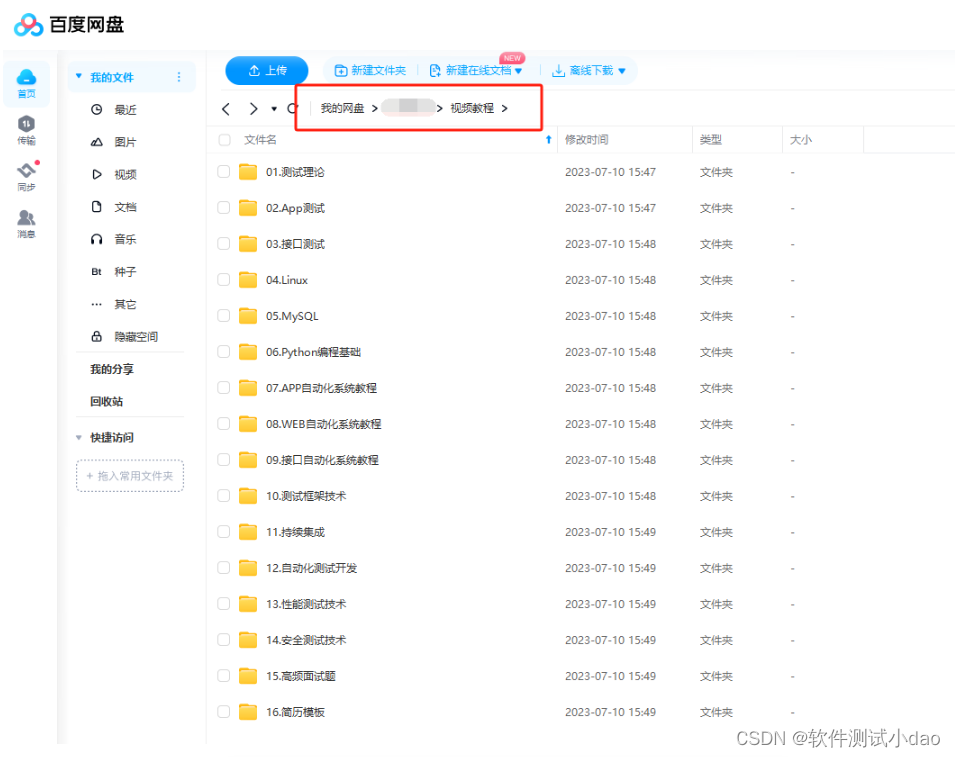







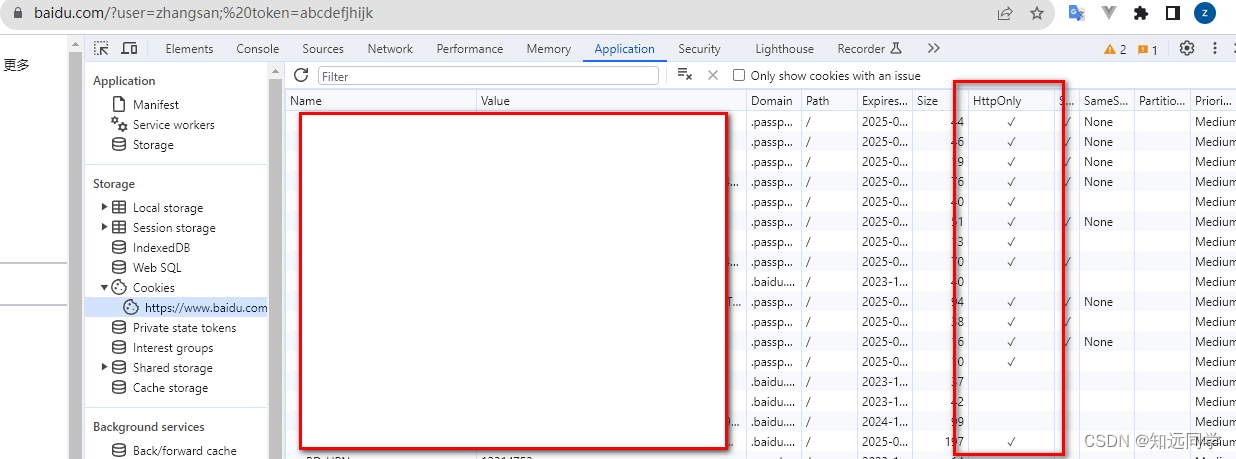
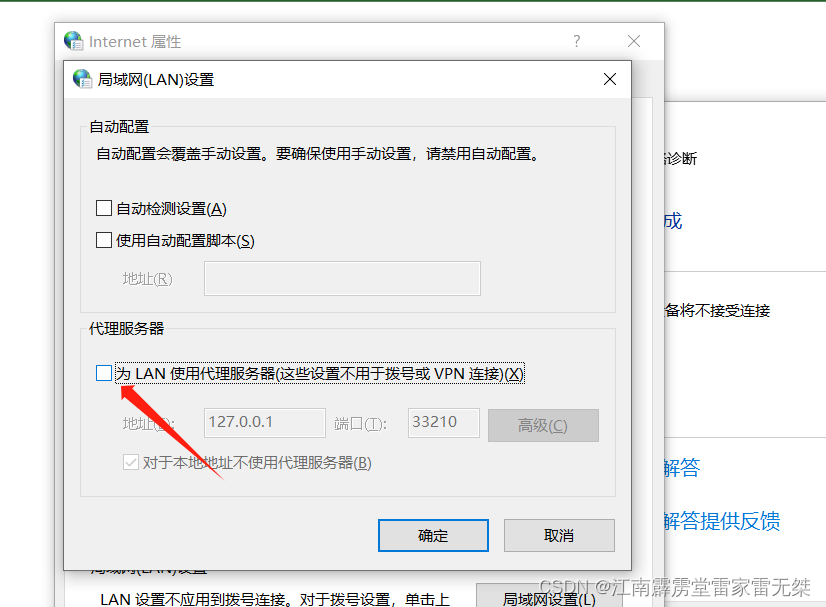
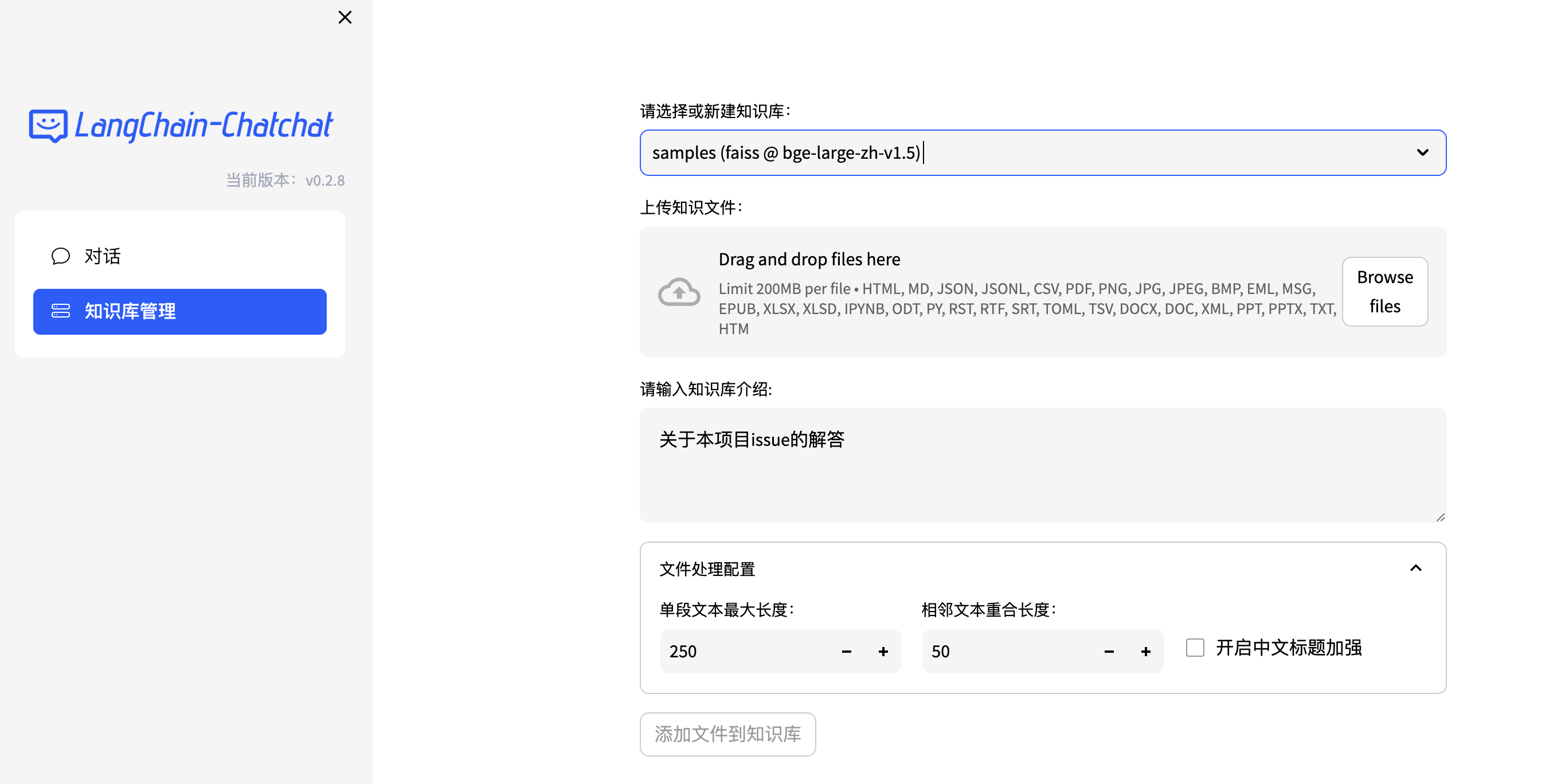
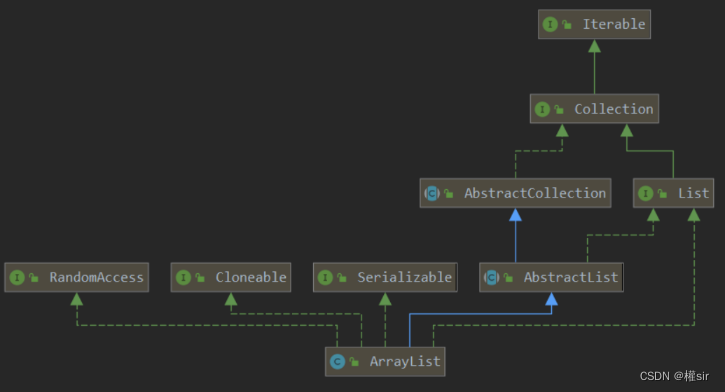


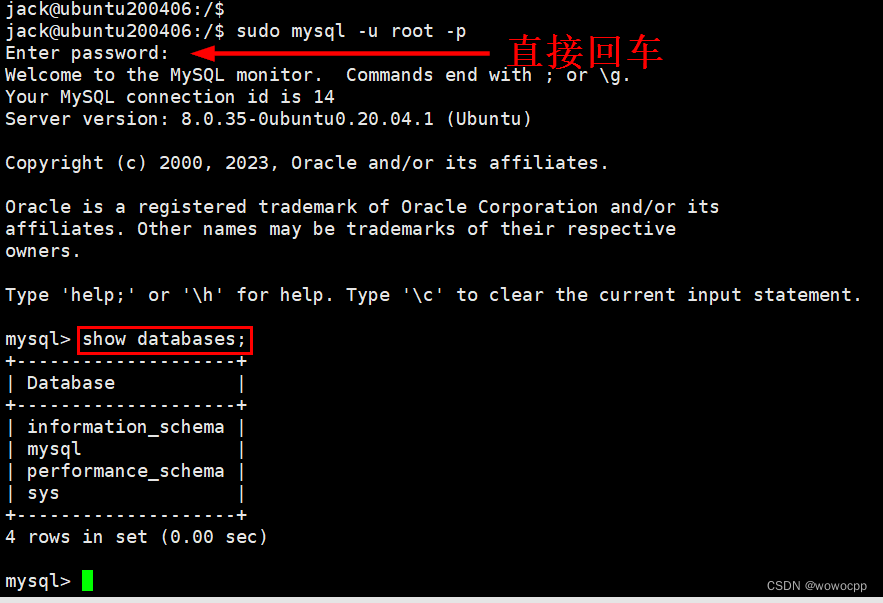

![[NAND Flash 2.1] NAND Flash 闪存改变了现代生活](https://img-blog.csdnimg.cn/direct/a85eca0f4e874071b5cebc43aa8a2049.png#pic_center)
